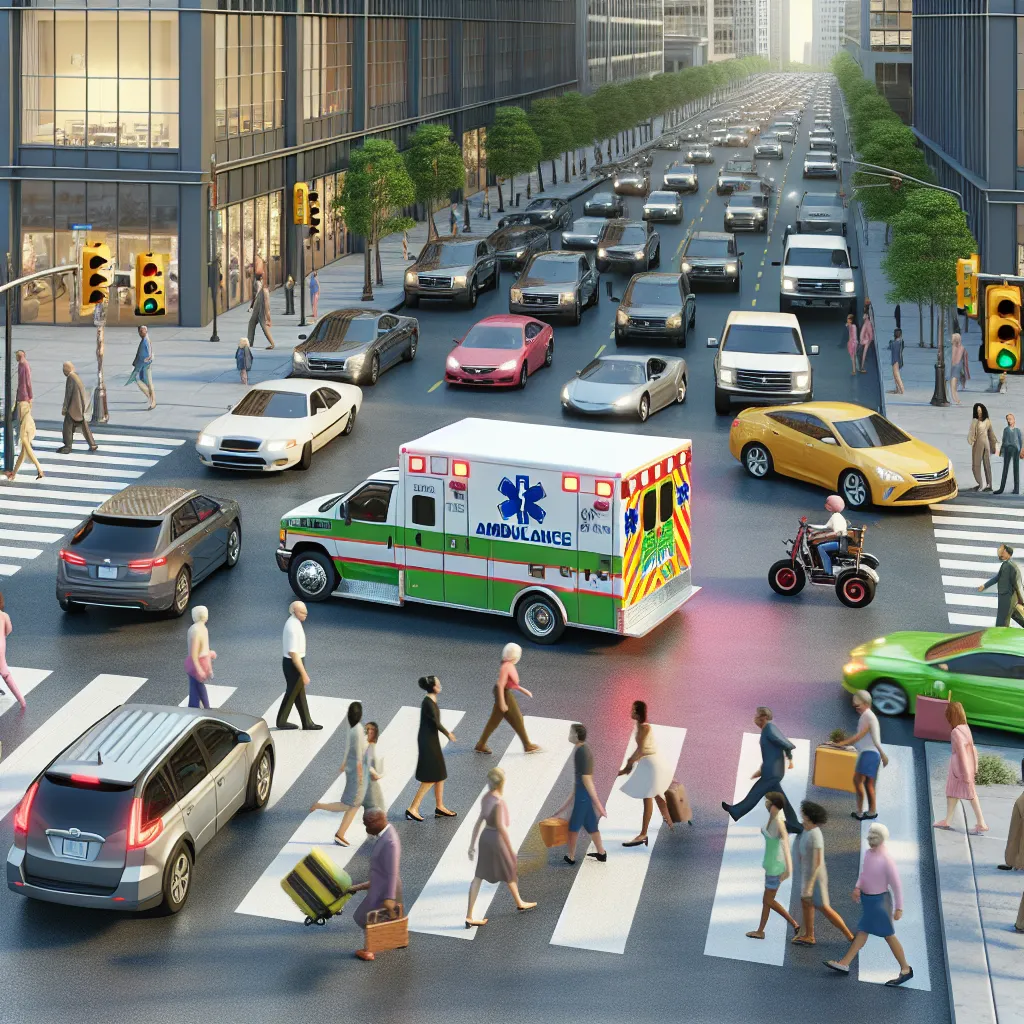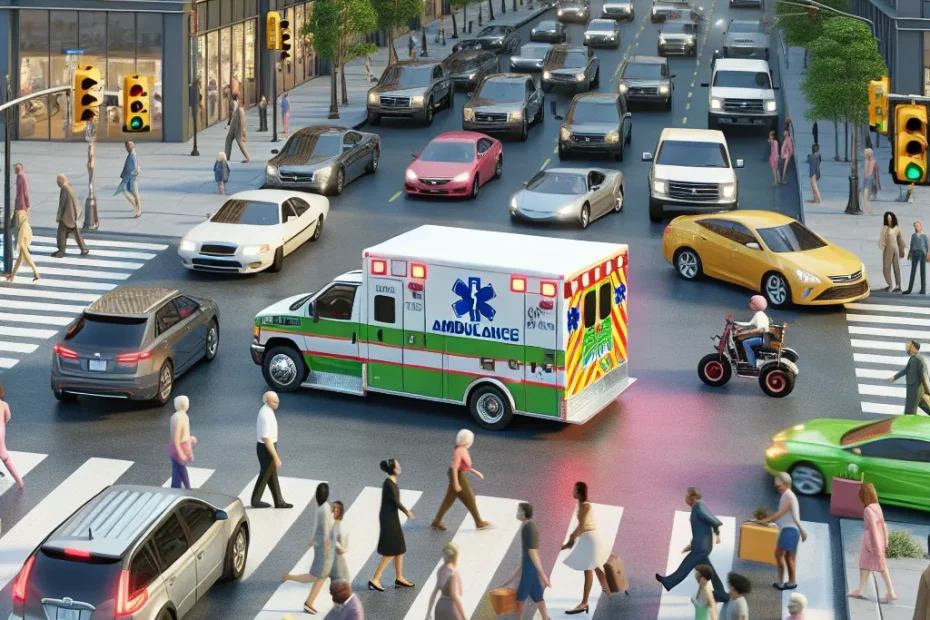In today’s fast-paced world, knowing how to respond to emergency vehicles on the road is crucial for everyone’s safety. Understanding the rules and regulations for giving way to ambulances, fire trucks, and police cars can make a significant difference in emergency situations. As drivers, it is our responsibility to be aware of our surroundings and act swiftly when emergency vehicles approach. By following the proper protocols, we can help emergency services reach their destinations quickly and efficiently, potentially saving lives in the process. Let’s delve into the essential guidelines for handling emergency vehicles in Korea.

Understanding Priority Vehicles in Korea
In Korea, it is crucial to understand the rules and regulations regarding priority vehicles, especially emergency services. When it comes to giving way to emergency vehicles, such as ambulances, fire trucks, and police cars, there are specific guidelines that all drivers must follow to ensure the safety and efficiency of these essential services.
Rules for Emergency Vehicles
According to the Korean Road Traffic Act, drivers are required to yield the right of way to emergency vehicles that are displaying their lights and sirens. Failure to do so can result in fines and penalties. It is important to note that emergency vehicles in Korea are equipped with advanced technology to navigate through traffic quickly and safely, so it is vital for other drivers to cooperate and make way for them.
In the case of an emergency vehicle approaching from behind, drivers should safely move to the side of the road and stop their vehicles to allow the emergency vehicle to pass. It is recommended to avoid sudden movements or braking, as this can cause accidents or delays for the emergency vehicle.
Designated Emergency Vehicle Lanes
Furthermore, drivers should be aware of designated emergency vehicle lanes on highways and major roads. These lanes are specifically marked for emergency vehicles and should be kept clear at all times. Failure to comply with this regulation can result in fines and penalties.
In addition to emergency vehicles, there are other priority vehicles in Korea, such as buses and official government vehicles. Drivers should also give way to these vehicles when necessary, as they play a crucial role in public transportation and government operations.
Overall, understanding the rules for giving way to priority vehicles in Korea is essential for ensuring the safety and efficiency of emergency services and public transportation. By following these guidelines and cooperating with other drivers, we can all contribute to a safer road environment for everyone. Let’s all do our part to support our emergency services and prioritize safety on the roads! 🚑🚒🚓
Rules and Regulations for Emergency Vehicle Approaching
Greetings, readers! Today, we delve into the essential rules and regulations for giving way to emergency vehicles in Korea. When an ambulance, fire truck, or police car approaches with sirens blaring and lights flashing, it is crucial to know how to react promptly and safely. Let’s explore the guidelines to ensure a smooth flow of traffic and, most importantly, to assist our dedicated emergency services in reaching their destinations swiftly.
Specific Laws Regarding Emergency Vehicles
First and foremost, it is vital to be aware of the specific laws regarding emergency vehicles in Korea. According to the Road Traffic Act, all drivers are required to yield the right of way to emergency vehicles displaying their lights and sirens. This means that when you hear or see an emergency vehicle approaching, you must make every effort to clear a path for them to pass through unhindered.
Practical Guidelines
In terms of practicality, when you encounter an emergency vehicle approaching from behind, the best course of action is to safely pull over to the side of the road. By doing so, you not only allow the emergency vehicle to pass but also prevent any potential delays in their response time. Remember, every second counts in emergency situations.
Furthermore, it is crucial to avoid sudden or erratic maneuvers when giving way to emergency vehicles. Abrupt lane changes or stops can create additional hazards on the road. Instead, signal your intentions clearly, check your surroundings for other vehicles, and make a smooth transition to the side of the road.
Intersection Protocol
In cases where you are at an intersection and an emergency vehicle is approaching with its lights and sirens activated, the law requires you to yield the right of way by stopping your vehicle. Allow the emergency vehicle to pass through the intersection safely before resuming your journey.
Let’s all do our part in ensuring the safety and efficiency of our emergency services by following these rules and regulations for giving way to emergency vehicles in Korea. Together, we can make a difference and support those who work tirelessly to keep us safe.
Stay informed, stay alert, and always be prepared to yield for our heroes on the road!
Remember, when it comes to emergency vehicle approaching, every driver plays a crucial role in facilitating a swift and safe response. Let’s work together to make our roads safer for everyone!
Giving Way to Ambulances in Traffic
When it comes to navigating through traffic, it is crucial to understand the rules and regulations regarding giving way to emergency vehicles, especially ambulances. In Korea, just like in many other countries, there are specific guidelines in place to ensure that emergency services can reach their destinations quickly and safely.
Legal Obligations
It is important to note that when an ambulance approaches with its lights flashing and sirens blaring, other drivers are legally required to give way and make room for the ambulance to pass through. Failure to do so not only delays the ambulance in reaching the emergency but can also result in serious consequences.
According to the Korean Road Traffic Act, all vehicles are obligated to yield to emergency vehicles such as ambulances, fire trucks, and police cars by pulling over to the side of the road and allowing them to pass. The act specifies that drivers should not block or obstruct the path of an emergency vehicle in any way.
Common Courtesy and Safety
In addition to the legal obligations, giving way to ambulances is a matter of common courtesy and safety. By clearing the way for ambulances, drivers can potentially save lives by ensuring that medical assistance reaches those in need as quickly as possible.
Remember, when you hear the sirens and see the flashing lights of an ambulance approaching from behind, remain calm and signal your intention to pull over. Check your surroundings for other vehicles and safely maneuver your car to the side of the road to create a clear path for the ambulance.
In conclusion, giving way to ambulances in traffic is not just a legal requirement but a moral obligation to help those in need. By understanding and following the rules for emergency vehicles, we can all contribute to a safer and more efficient emergency response system on the roads. Let’s all do our part in ensuring that ambulances can reach their destinations without any unnecessary delays or obstacles. 🚑🚨
Responsibilities of Drivers When Emergency Vehicles Approach
When emergency vehicles, such as ambulances, fire trucks, or police cars, approach with sirens blaring and lights flashing, it is crucial for all drivers on the road to know their responsibilities and take immediate action. In Korea, as in many other countries, there are specific rules and regulations in place to ensure the smooth passage of emergency vehicles through traffic.
Immediate Action Required
Drivers must be aware that when an emergency vehicle is approaching from behind, they should immediately make way by moving to the side of the road. Failure to do so can result in delays for the emergency services and potentially endanger the lives of those in need of urgent assistance.
Legal Obligations
According to the Korean Road Traffic Act, drivers are required to yield the right of way to emergency vehicles by pulling over to the side of the road and stopping until the vehicle has passed. This not only applies to vehicles directly in front of the emergency vehicle but also to those in adjacent lanes. It is important to create a clear path for the emergency vehicle to navigate through traffic safely and efficiently.
Avoiding Obstructions
In addition to pulling over and stopping, drivers should avoid making sudden or erratic movements that could impede the progress of the emergency vehicle. Changing lanes abruptly or stopping in the middle of the road can create obstacles and hinder the response time of the emergency services. It is essential to remain calm, alert, and cooperative in these situations to ensure the swift passage of the emergency vehicle.
Remember, the actions of individual drivers can have a significant impact on the outcome of emergency situations. By understanding and fulfilling their responsibilities when emergency vehicles approach, drivers can contribute to the overall effectiveness of emergency response efforts and help save lives on the road.
Let’s all do our part to support our emergency services and prioritize safety on the roads! 🚑🚒🚓 #SafetyFirst #EmergencyVehicleEtiquette
When it comes to handling emergency vehicles in Korea, understanding the rules and regulations is crucial. Giving way to ambulances in traffic and knowing the responsibilities of drivers when emergency vehicles approach can make a significant difference in saving lives. It is important to stay calm, follow the instructions, and prioritize the safety of everyone on the road. By being aware of the proper procedures and acting swiftly, we can contribute to a more efficient and effective emergency response system in the country. Remember, every second counts in emergency situations, and our cooperation can make a real difference in someone’s life. Let’s all do our part to ensure the smooth passage of emergency vehicles when they need it the most.
